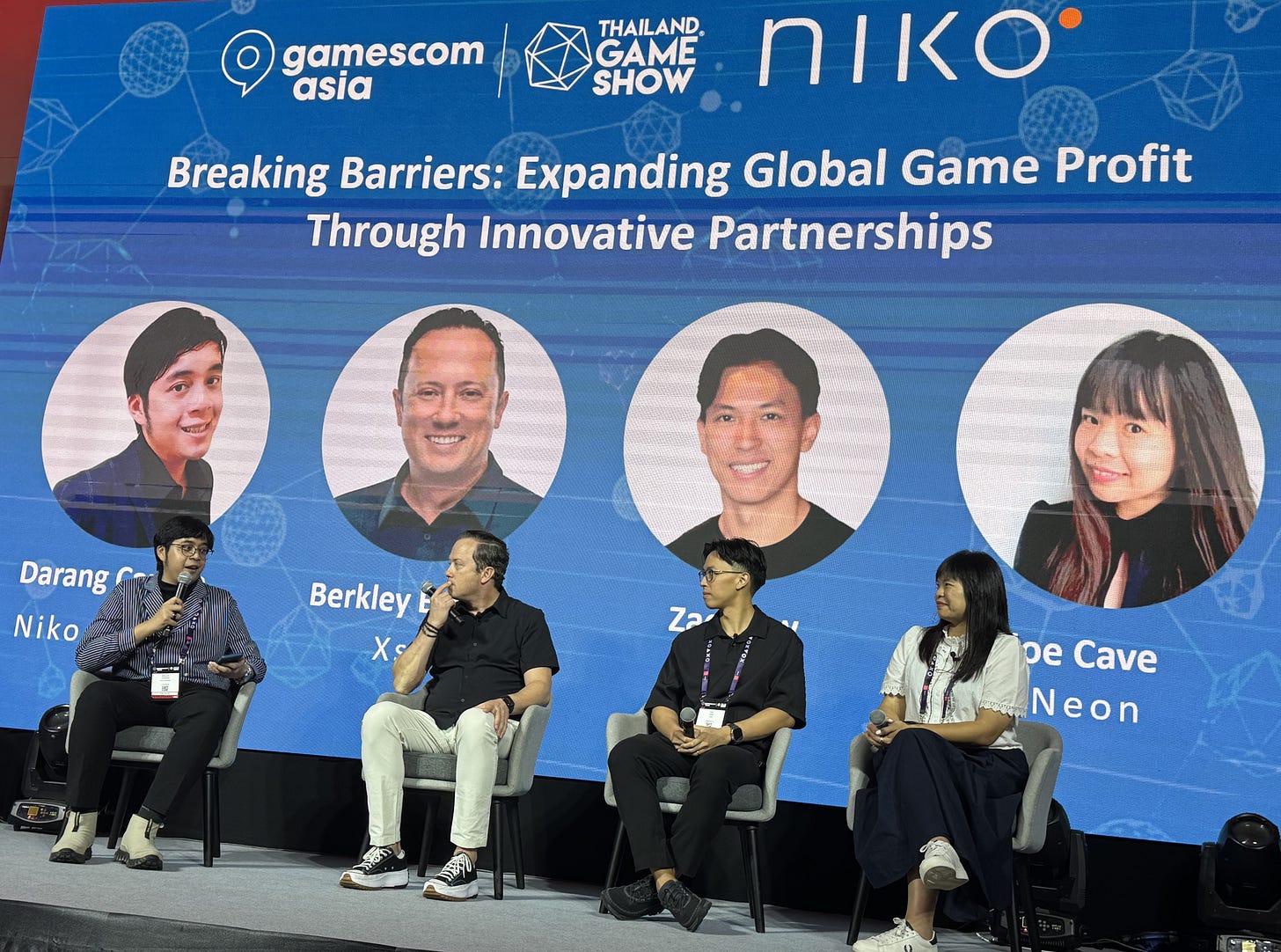Breaking Barriers: Expanding Global Game Profit Through Innovative Partnerships
As the Knowledge Partner of gamescom asia 2025 x Thailand Game Show, Niko Partners is thrilled to present the latest insights to video games industry leaders attending SEA’s premier gaming event. This year, we put together a panel titled “Breaking Barriers: Expanding Global Game Profit Through Innovative Partnerships”, featuring Zac Liew (Chief Commercial Officer – Coda), Berkley Egenes (Chief Marketing & Growth Officer – Xsolla), and Chloe Cave (Head of Growth - Neon). Moderated by Moderated by Darang Candra of Niko Partners, this panel explored how how game developers can unlock global growth by leveraging non-traditional app stores and D2C channels.
The panelists also discussed actionable strategies including how developers can capture opportunities in high-growth regions (such as Asia Pacific and India) while minimizing risks, maximizing profits, and delivering exceptional gaming experiences worldwide. We took the attendees to learn more about alternative payments, out of app monetization, non-traditional D2C PC game monetization, the risks and challenges, especially in developing markets and more - all from companies who know this best, and moderated by Niko Partners, who conducts market intelligence on the games industry in Asia and MENA every day. Niko Partners has co-published two free white papers about monetization: on the rise of out-of-app platform in Asia (in collaboration with Coda) and the monetization landscape in MENA (in collaboration with Xsolla).
Expanding into new markets requires more than great games—it demands an understanding of diverse monetization, go to market strategies, and local gamer preferences in global country markets. Southeast Asia, in particular, shows an open attitude towards gaming and game technology, paving the way for a third-party app store. The next section will include a sneak peek to Niko Knowledge Brief gamescom asia 2025 x Thailand Game Show special. Download the full Knowledge Brief here.
Leapfrogging the Old Guard: How Southeast Asia’s Third-Party App Market Took Off
Southeast Asia’s technology adoption story is unlike that of most other regions, defined by its leapfrogging of legacy infrastructure and going straight to a mobile-first society. While fixed-line internet and landline penetration remain low, smartphone adoption has surged, making them the primary gateway to digital ecosystems.
Mobile-first growth has fueled a rapid uptake of mobile-first services, which has fostered a population that is not only comfortable with, but is eager to embrace technological change. So, while credit card usage remains relatively low across all Southeast Asian markets except Singapore, mobile wallets such as GrabPay, GCash, and GoPay have become the default for activities from street food payments to cross-border remittances. This openness to alternative systems has given Southeast Asia a distinctive edge in shaping and scaling new digital ecosystems.
Niko Partners’ gamer behavior insights show that this same openness also extends to gaming and game technology, where Southeast Asian users are often ahead of the curve in embracing frontier tools. From generative AI to play-to-earn, Southeast Asian gamers consistently show higher levels of interest in the utilization of new tech. This also extends to alternative app stores and out-of-app monetization models, where third-party distributors will find fertile ground, in large part because gamers are less tied to legacy hardware or entrenched distribution models.
Many are willing to step outside the Google / Apple walled gardens and adopt third-party solutions that generally face more resistance in mature markets. In fact, we estimate that approximately 38% of mobile game market revenue and 39% of mobile game app downloads in Southeast Asia came from out-of-app sources, demonstrating the rising importance of alternative app stores as a source of discovery and monetization. Understanding the underpinnings of this market can help those in the game industry capitalize on this ever-evolving landscape and understand how Southeast Asia is an ideal market for alternative distribution models.
Third-Party App Adoption and Dynamics
(continue to read here)



